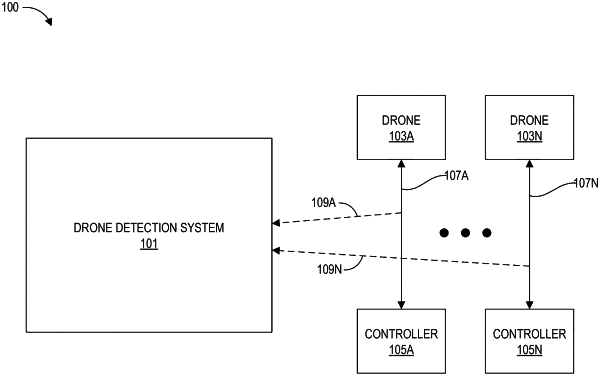| CPC H04B 1/7136 (2013.01) [B64C 39/024 (2013.01); G05D 1/0022 (2013.01); G06F 17/18 (2013.01); H04B 1/7143 (2013.01); H04B 1/7156 (2013.01); B64U 2101/20 (2023.01); B64U 2201/20 (2023.01)] | 20 Claims |

|
1. A system for detecting presence of one or more drones, the system comprising:
a radio-frequency (RF) receiver configured to receive a first RF signal transmitted between a first drone and a first drone controller, the first RF signal including a first frequency hopping sequence;
a processor; and
a non-transitory computer-readable memory in communication with the processor and having stored thereon computer-executable instructions to cause the at least one processor to:
obtain a parameter model that represents the first frequency hopping sequence, the parameter model comprising a plurality of model parameters that model the first frequency hopping sequence,
fit the parameter model to a set of samples by:
constructing a plurality of instances of the parameter model, each instance associated with a different subset of samples from the set of samples, and
evaluating a fitting error between each of the subsets of samples and the associated instance of the parameter model,
select an instance from the plurality of instances based on the fitting error associated with each of the subsets of samples, and
identify the first drone based on the selected instance of the parameter model.
|